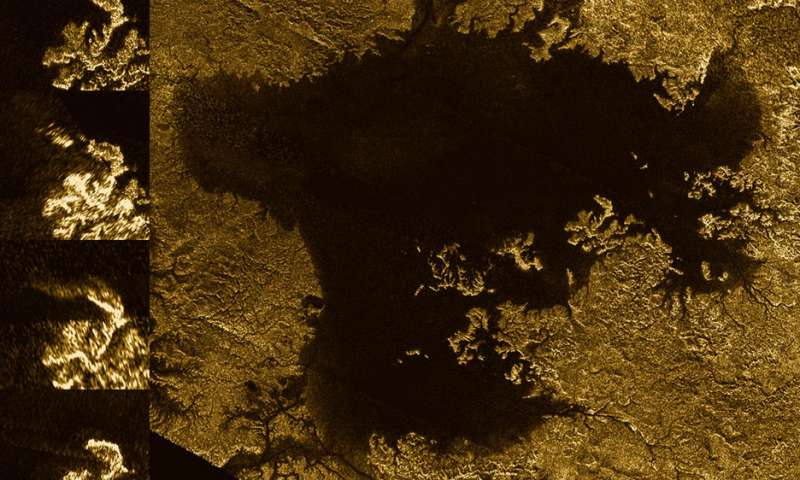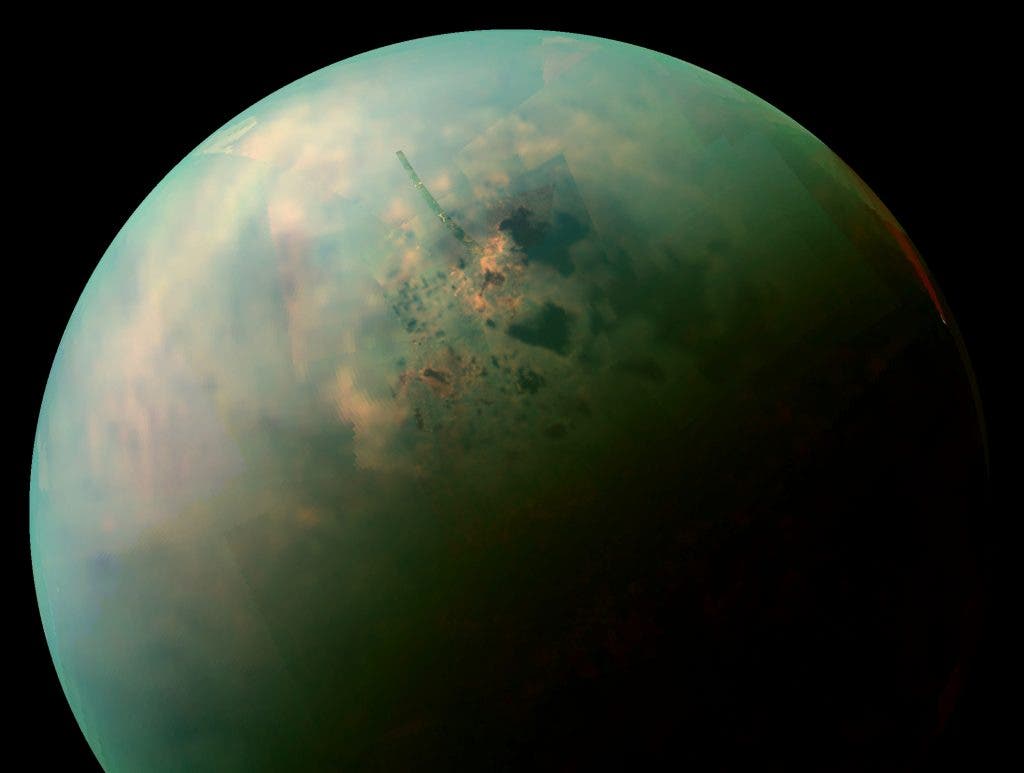
NASA’s ever-resourceful Cassini probe found steep-sided canyons on Saturn’s moon Titan. These geological formations are filled with liquid hydrocarbons like methane — the first evidence of both liquid-filled channels and hundreds of meters deep canyons on Titan. Remarkably, these canyons must have formed very similarly to those on Earth, like the Grand Canyon in Arizona.
These channels form a network branching out of the large Ligeia Mare sea, located on the northern side of the moon. They’re less than half a mile wide, with some slopes steeper than 40 degrees. The canyons are quite deep though, measuring anywhere from 790 to 1,870 feet (240 to 570 meters) from top to bottom.

To find these channels, geologists working at NASA had to combine altimetry and radio wave readings as direct observations are made impossible by the thick hazy atmosphere surrounding Titan. Pings of radio waves bounced back and forth between the surface of the moon and the Cassini probe to determine the height of features. Then, the way radio signals reflected off surfaces told researchers what they were made off.
Since the signal was very similar to that observed on Titan’s rich hydrocarbon seas, the researchers concluded that the matter which covers the channels must be made of the same stuff. Previously, some suggested these sort of channels could be filled with saturated sediment, but the dark material seems much likelier to be liquid at this stage.
[ALSO SEE] NASA wants to explore Titan’s methane oceans with a robot submarine
As to the formation of these geological features, the NASA geologists posit processes akin to those found on Earth: uplift of terrain, changes in sea level (methane sea instead of water) or both.
“It’s likely that a combination of these forces contributed to the formation of the deep canyons, but at present it’s not clear to what degree each was involved. What is clear is that any description of Titan’s geological evolution needs to be able to explain how the canyons got there,” said Valerio Poggiali of the University of Rome, a Cassini radar team associate and lead author of the study which was published in the Geophysical Research Letters journal.
On Earth, such examples of canyon-carving processes are abundant, such as the canyons found along the Colorado River in Arizona. Uplift power erosion is what drove the formation of the Grand Canyon, while for those formed by variations in water level we can give Lake Powell as an example.
“Earth is warm and rocky, with rivers of water, while Titan is cold and icy, with rivers of methane. And yet it’s remarkable that we find such similar features on both worlds,” said Alex Hayes, a Cassini radar team associate at Cornell University, Ithaca, New York, and a co-author of the study.
Though Cassini made its flyby around Titan in 2013, scientists are still making sense of the wealth of data it beamed back. They expect we’ll soon have a very comprehensive picture of Titan’s landscape, but also of the forces involved in its formation.






